I have been an oil painter for a number of years…
…and during that time, I learned some tough lessons along the way.
While I did take a few classes in college for traditional painting, on the whole, I am a self-taught artist.
As likely any self-taught artist will tell you, there are inevitably going to be some ‘oh duh’ moments when it comes to your workflow…
…and that’s completely fine (and expected)!
To help all aspiring artists that currently read the blog or are simply looking for some additional guidance to not only improve their workflow but get much better results from the pieces that they put together, here I wanted to outline 10 canvas painting tips that I find myself relying on all the time.
Not only will most of these tips work perfectly with either acrylic or oil mediums, but you can use them today (or whenever the next time you put the brush to canvas).
To not waste a minute more of your valuable time, let’s get started:

Table of Contents
Canvas Painting Tip #1 – Make It Prime For Painting
If there is one thing that you must know when it comes to painting on canvas it is this:
Gesso (or any primer) needs to be an essential part part of your artist toolkit.
But why is gesso important you may be wondering?
Well…here’s why:
I went (for more years than I would like to admit) too long without relying on this key primer.
While many manufacturers may make a canvas that has been ‘primed’ there is still nothing better when it comes to performance that you achieve after applying a layer of gesso before you start painting.
With its fast drying times (under 30 minutes), you can quickly add several layers of gesso to your canvas(es).
It gets better…
First and foremost, gesso provides an excellent base for you oil painting to rest on.
Furthermore, gesso also adds a nice texture layer to the canvas that will grip the pigment from the tip of your brush (oil or acrylic) with absolute ease.
This means no splayed brush tips and generally a much better performing brush (even if you are using one of those budget multipack brush sets).
But perhaps the most beloved feature of gesso is its ability to not waste much of your paint.
When gesso is applied to the canvas, it will fully absorb into the fibers of the surface and prevent any excess waste of your paint…
…let’s face it, quality oil and acrylic paint aren’t cheap!
Gesso’s much lower price per ounce will be a much better medium to initially coat any canvas surface whether you use oil or acrylic.

Canvas Painting Tip #2: Sketch Before You Paint
An initial sketch of a piece with charcoal or graphite can be a great way to get a general idea of the composition of the piece that you are planning.
While either graphite or charcoal can be great mediums for this process, some artists tend to steer clear of them as they will often mix with the paint causing some color alteration of the paint.
Therefore, if you plan on using either of these, a fixative may be a great way to ensure that there are no issues.
Given the natural weave of the canvas fiber, a spray fixative will work to get deep into the weave of the fiber.
These lines can help assist you with your underpainting (which we will be covering in just a minute).
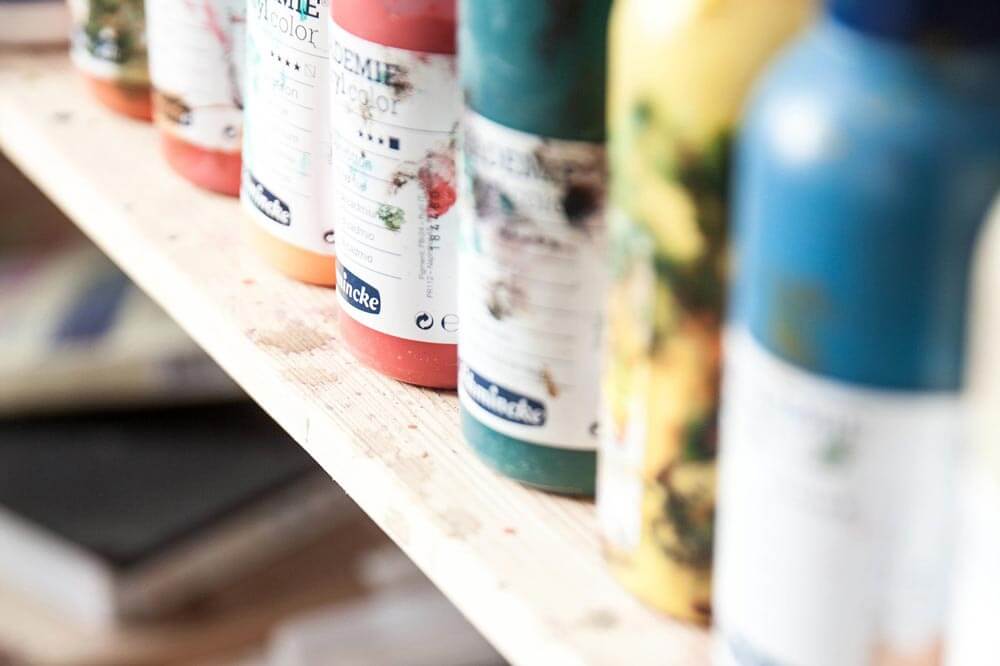
Canvas Painting Tip #3: Lay Down Your Initial Wash With The Right Medium
Nearly all seasoned artists never just start with their painting from a primed canvas.
While we would like to think that when Van Gogh painted The Starry Night or when Matisse created Dance (both pieces were oil on canvas), that these masters just simply painted their final piece directly onto the canvas and called it a day…
…we would probably be mistaken (if an art history buff is reading this and feels the above isn’t accurate, please drop a note in the contact form).
Instead, what many artists will do when working on canvas is lay down an initial wash to their surface after the primer coat has been applied.
This wash can help set the tone of the painting in a very unique way.
Generally speaking, artists may use a blue or ‘cooler’ wash to help convey a much more frigid climate or one that seems impersonal.
Whereas a wash with a heavy red or yellow tone may help to convey just the opposite – a warm climate or a painting that might seem a bit more inviting.
Whatever color you decide on your wash, the takeaway here is to not underestimate its importance.
Now, here’s the kicker:
When putting down a wash with an oil paint, it can be extremely frustrating to have to wait a day or two before you can move onto the underpainting.
Therefore, one trick that I learned along the way (and not one I learned in my couple of semesters taking art classes in college), is to use an acrylic medium instead.
Just like gesso, when you use an acrylic paint as a wash, you can have a ‘paint ready’ layer less than an hour’s time.
How does all this relate to a canvas surface?
With canvas, you can load up several layers and mediums with ease.
So, given this natural advantage be sure that you make full use of it!
Canvas Painting Tip #4: Your Canvas Isn’t A Palette
While most people (i.e. non-artists), will consider painting to be a sloppy activity, the reality is just the opposite.
Organized artists will find that they often can perform much better and more efficiently than those who are completely scatter-brained.
When it comes to painting on canvas (or any surface for that matter), you shouldn’t use the canvas as a palette for mixing colors.
All mixing should be done on the palette tray itself and then applied to the canvas surface.
While canvas has an ample backbone that can support quite a bit of paint, once paint is applied to the surface, its incredibly difficult to clean or scrape away should you make a mistake.
While you can typically pick up palettes at an art supply store for under $10 bucks, one of the best palettes we like to recommend specifically for oil painters is glass.
Glass is great for mixing your paints as the surface is incredibly smooth.
But better yet, glass can be cleaned and reused with very little effort.
With a sharp razor you can effortlessly clean off any dried oil paint on a glass surface and start fresh.
Now you might be wondering:
Where can I get a glass palette?
I personally found that going to a home store (i.e. Home Goods) and looking for a picture frame in their deep discount area will be your best bet.
Sure, you could head to your local hardware store and get a piece of glass custom cut for you, but that is going to cost way more money.
Besides, you can typically find a scratched or dented frame for under $5 bucks with a sizable glass surface.
Quick note:
Just simply take some masking tape and outline the edges (so you don’t cut yourself) and you have the perfect and cheap alternative instead of mixing on the canvas.
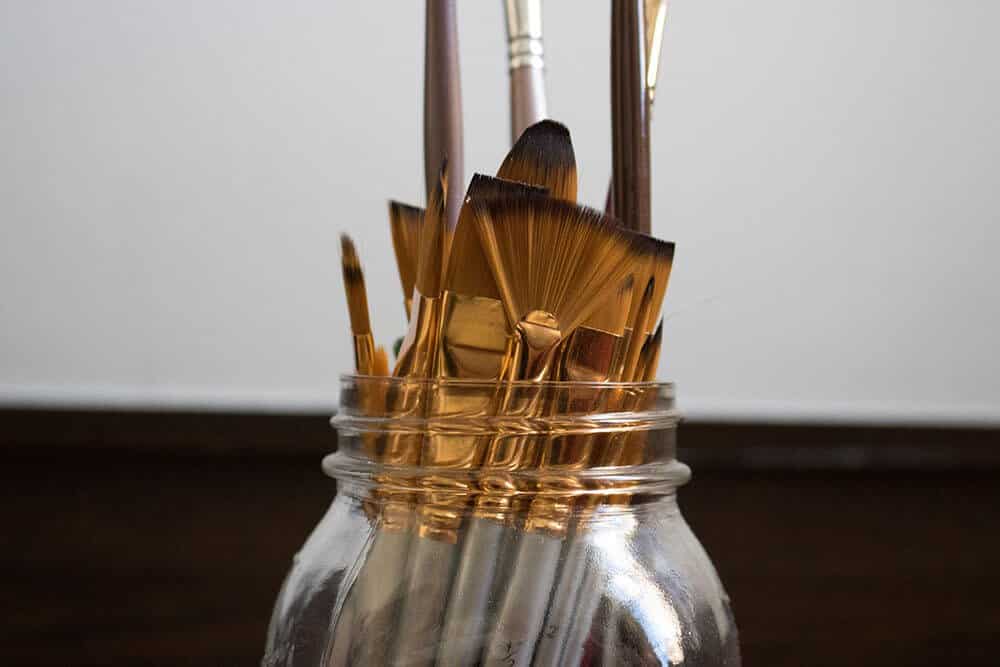
Canvas Painting Tip #5 – One Brush Shouldn’t Do Everything On The Surface
Artists have used canvas as a surface for centuries given its general low cost coupled with its strong archival abilities.
Like any other surface though, when painting on canvas, you should never use just a single brush.
While it might seem like a great challenge ‘One brush painting on canvas’ (hmm this sounds like a good article idea J), the results will likely be lacking.
To really bring the best out in a canvas painting, you need to use at least three brushes at a minimum for these key layers in your painting:
- Wash
- Under/Over painting
- Detail work
Not only will this deliver better results on canvas itself, but will also ensure that your brushes don’t get abused/overused.
Canvas Painting Tip #6 – Canvas Is Great For Underpaintings
While we made mention to using a charcoal or graphite pencil to perform your initial sketch on a canvas surface, one of the main issues with this method is the reliance on a fixative.
Without the use of a fixative, you run the risk of the charcoal or graphite ‘muddy-ing up’ your pigment.
A way around using graphite or charcoal would be to perform an underpainting.
Using a neutral color (Burt Sienna tends to be preferred among artists everywhere) coupled with a solvent like odorless mineral spirits, you can create a really thin medium that will be perfect for developing the composition.
With canvas having the natural ability to hold several layers of paint, you won’t have to worry about your underpainting peeking through as you construct your piece.
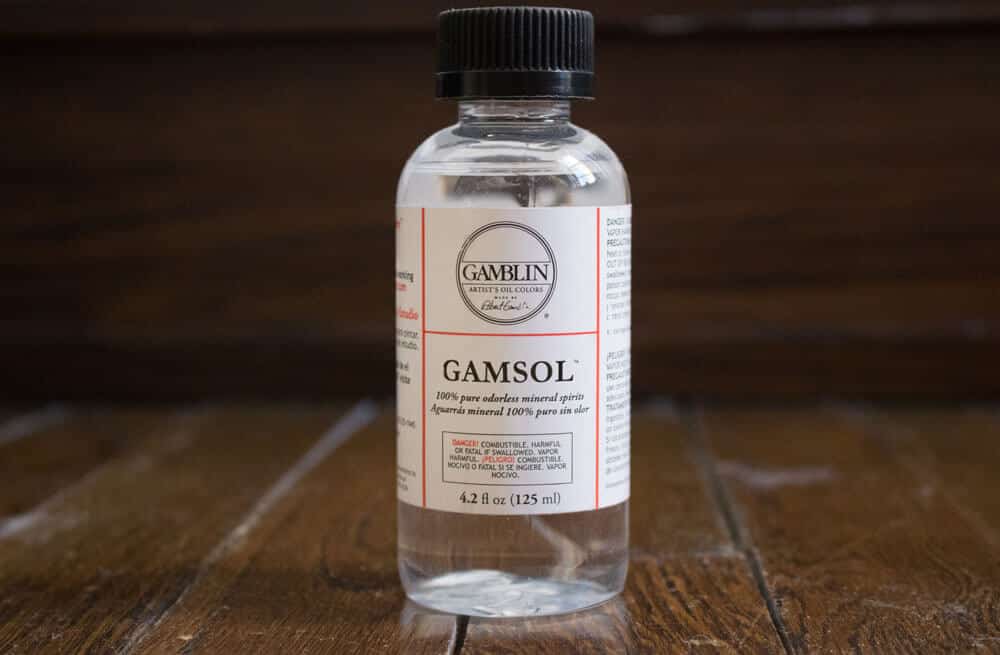
Canvas Painting Tip #7: Understand When (And How) To Use Solvents
As we briefly mentioned to in the previous section, solvents are a key staple to any artist’s studio.
Just like gesso, solvents should be within an arm’s reach as you are painting.
Whether you are using oil or acrylic paints, solvents will give you much more control and flexibility when using these mediums.
For oil paints you will often hear artists primarily talk about either turpentine or odorless mineral spirits.
If you would like to learn more about these two (and the risks associated with them), we invite you to check out our in-depth comparison between turpentine and odorless mineral spirits here.
Now for the acrylic painters reading this, your solvent option is extremely simple – water.
Water will help to dilute the bonds between the acrylic polymer emulsion and pigment as we discussed in great detail here.
Now, how does all this relate to painting either one of these mediums on canvas?
A whole lot actually!
Unlike wood, metal, glass, or any non-traditional canvas alternatives, these solvents will easily absorb into the canvas.
This makes it much easier for artists to use the trusted ‘fat over lean’ (or thick over thin) painting technique and add several layers to their painting without fear of it peeling or falling apart in any manner:
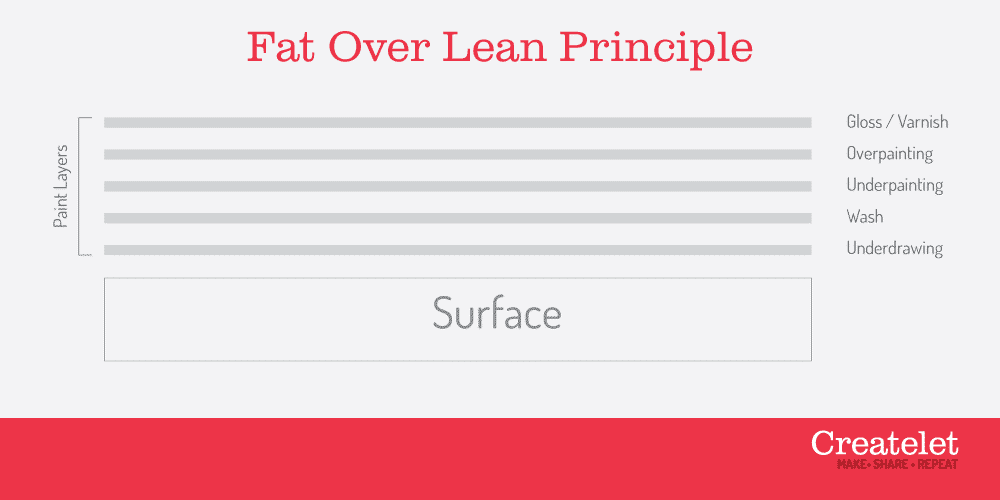
Of course, you want to make sure you exercise caution by not using too heavy of hand with solvents (i.e. typically not more than a generous 2:1 ratio).
Canvas Painting Tip #8: A Canvas Surface Can Support Additional Mediums
Just as a canvas surface can easily support many layers of paint combined with a solvent, it can also support the weight of additional mediums.
A favored medium from artists using oil may be linseed oil or a fast drying agent like Galkyd (by Gamsol) or Liquin (by Windsor Newton).
Like wood, canvas can support liberal amounts of additional mediums.
For the beginning artists out there reading this, canvas is terrific for experimentation given its extremely versatile surface.
Canvas Painting Tip #9: Dry Your Piece Appropriately
Depending on the medium used (oil vs acrylic) will drastically alter the way you should be drying your canvas painting.
As we explored in great detail on how long you should expect an oil painting to dry, just know this:
- Oil paint is all about oxidation
- Acrylic paint is all about evaporation
For info on all other paints – check out this infographic:
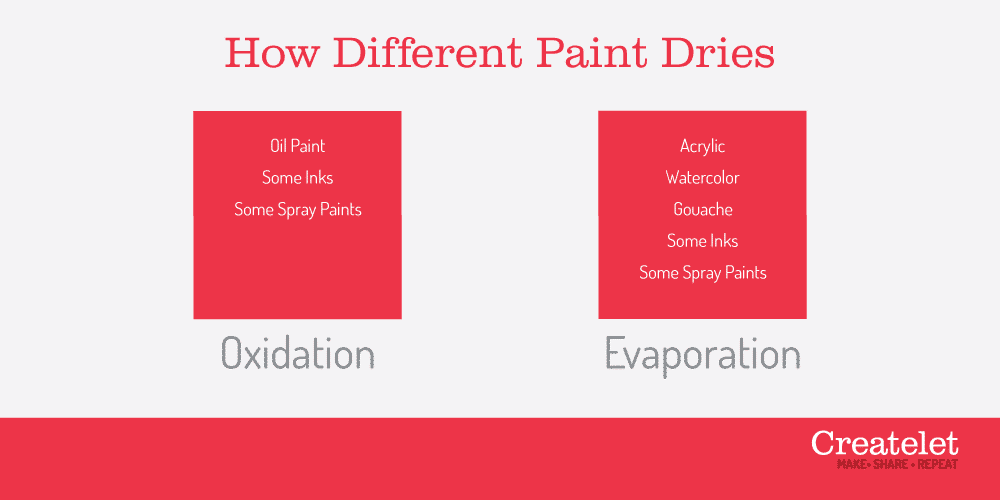
Therefore, when drying your canvas painting you need to create an environment that is conducive to these environments.
Generally speaking, with an oil painting, you will want to store it in a warm and dry environment (i.e. think a garage).
Damp areas like a basement (where many of our readers tend to set up their studio), will often have to wait a fair bit longer for their painting to fully dry.
To help speed up drying times, some methods we touched on earlier in this article (acrylic underpainting or fast drying solutions like Galkyd or Liquin) can definitely see a marked improvement.
For the readers out there using acrylic on canvas, given the relatively fast drying nature of acrylic (especially when compared to oil), a well-ventilated area will ensure that the acrylic paint can evaporate and harden quite quickly (typically within a day).
Canvas Painting Tip #10: Share! Put Your Self Out There!
Not really an official ‘tip’ per se (and we wanted our list to finish on a nice round number :-)), but if you are an artist looking to make a splash or simply market yourself a bit more, be sure to share your painting!
Whether its hung at a local coffee house or you plan on setting up a website to display your work and solicit for commissioned pieces, as an artist its important to always put yourself out there for others to both appreciate and critique your pieces but hopefully just appreciate 😉
Last of all, if you only used canvas in art school, or perhaps generally find yourself sticking to cardboard or wood, it might be time to rediscover canvas and enjoy all the great features it displays!